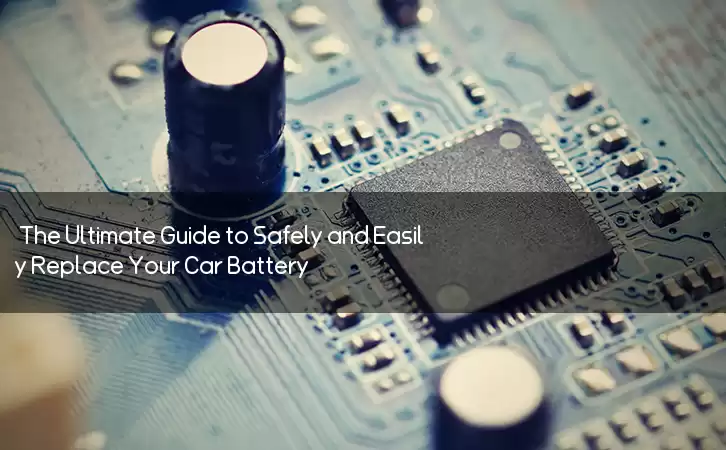Information Center
The Ultimate Guide to Safely and Easily Replace Your Car Battery
Published:2023-08-09 20:32:31 Author:Green WCND Views:74Car Battery Replacement: A Guide to Ensuring a Smooth and Safe Process

Replacing a car battery is one of the basic maintenance tasks that every car owner should be aware of. However, it can often be a daunting task, especially for those who have never done it before. With this guide, we aim to provide you with everything you need to know about car battery replacement, and how to ensure that the process is smooth and safe.

Firstly, it is important to understand when a battery needs to be replaced. The lifespan of a car battery can vary widely depending on several factors such as climate, driving conditions, and maintenance. Generally, a car battery lasts about four to five years. Warning signs that it may be time to replace your battery include slow engine crank, dimming headlights, dashboard warning lights coming on, and a bad smell from the battery itself.
Before you start the replacement process, it is important to keep in mind some safety guidelines. Make sure your vehicle is turned off, and that you are wearing appropriate clothing and gloves. Batteries contain corrosive materials that can cause skin burns, so it is important to handle them with care.
Next, it is time to remove the old battery. Start by unplugging the negative cable (black) from the battery’s negative terminal, followed by the positive cable (red). Loosen and remove the battery hold-down clamp and lift the battery out of the car.
Once you have removed the old battery, it is time to select a new one. It is important to choose a battery that is appropriate for your vehicle and driving conditions. Check the vehicle owner’s manual or consult with a mechanic or battery specialist to help with the selection.
When installing the new battery, make sure to place it in the same position and orientation as the old battery to ensure the cables fit properly. Reinstall the battery hold-down clamp, and connect the positive cable followed by the negative cable. Tighten the cable connections, and make sure that they are secure.
Finally, it is important to dispose of your old battery responsibly. Car batteries contain materials that can harm the environment and human health if not disposed of properly. Contact your local auto shop or recycling center to find out how to dispose of your old battery.
In summary, replacing a car battery can be a straightforward process if you follow these guidelines. Ensure that you are aware of the warning signs of a failing battery and take safety precautions before beginning the replacement process. Choose a battery that is appropriate for your vehicle and driving conditions, and dispose of the old battery responsibly. With these steps in mind, you can keep your car running smoothly and safely for years to come.
Power Adapter Design and Customization Guide for Portable Electric KettlesI. Common Design Types for Portable Electric Kettle Power AdaptersPortable electric ke···
I. Common Design Types of Power Adapters External Independent Type (Most Common) Design: A standalone adapter (e.g., "black brick") connected to the p···
Handheld Vacuum Cleaner Power Adapter Selection GuideIntroductionHandheld vacuum cleaners have become a mainstream tool for household cleaning due to their port···
Drill Power Adapter Selection Guide.drill-container { font-family: Arial, sans-serif; line-height: 1.6; max-width: 800px; margin: 0 auto; padding: 20px; } .dril···





